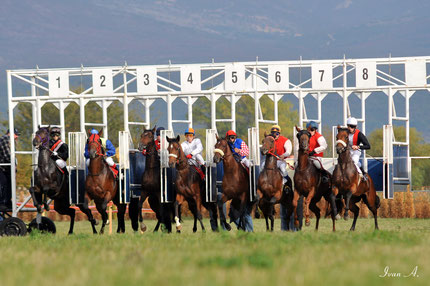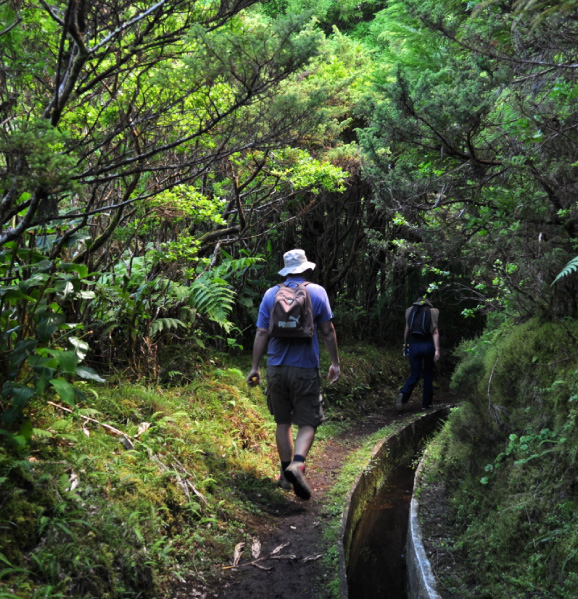The town of Sinj is situated in the heart of the Dalmatian hinterland, on the west side of the field that extends along the middle flow of the river Cetina. Surrounded by beautiful mountains of Kamešnica, Svilaja and Dinara. Sinj is about 13km far from the highway A1, at 30km distance from the Adriatic Sea. On elevation of 320 meters, the Town's temperature continental clime overlaps with sub - Mediterranean climate. Hot and dry summer days are relieved by cool nights, owing to the nearby mountain ranges. Winter months are abundant in perception, when temperatures can be very low.
The archaeological finds are evidence of the fact that the Cetina area has been inhabited since prehistoric times. The natives, members of the Illyrian tribe Delmates, appeared in the area during the Bronze Age and their development continued until the Romans had arrived. After the fall of the Roman Empire, barbarians repeatedly invaded the area. At the beginning of the 7th century, Croats came from White Croatia and settled in the region of Dalmatia. This was the time of the foundation of region of Dalmatia. This was the time of the foundation of the first Croatian principalities. In the later period, when a kingdom was founded, Sinj become the center of the Cetina County. The title of princes of Cetina was first acquired by the Šubić princes and from 1345 it belonged to the Nelepić princes.
In 1513 Sinj fell into Ottoman hands, up until 1686, when it came under Venetian rule. The Ottomans, however, were still attempting to win back Sinj. The most significant battle was fought in 1715, when 700 defenders of Sinj repulsed an attack of 40.000 to 60.000 of Ottomans. The disordered Ottoman army left the Cetina Krajina Region. In commemoration of their victory the surviving defenders instituted the Alka tournament, a famous equestrian competition held every year since then on first Sunday in August for more than three hundred years.
The Tournament of Alka is under protection of UNESCO as world intangible heritage. It is a symbol of the struggle for freedom, peace and hearth, for faith and hope and unites the past and the future. The Croatian people have always worshipped the Blessed Virgin Mary and in tribulations they have prayed for her help. The Sinj is one of the greatest Croatian sanctuaries dedicated to the Virgin Mary, and a celebration of the Feast of Assumption on August 15th is given the special solemn significance.
The church of the Miraculous Lady of Sinj dominates the city's main square. Built from 1699 to 1712, it resisted wars and earthquakes and has preserved its original appearance. The central place both inside the church and in the hearts of Sinj is occupied by the image of the Miraculous Lady of Sinj. It was painted by an unknown autor in the fifteenth or sixteenth century. It was brought from Rama as the refugees treasure and hope. After the famous victory in 1715, which happened by the legend thanks to Madonna's spiel, as a sing of thanksgiving, the military officers of the Sinj army collected 80 shiners and had the gold crown with cross made to decorate the Miracle Painting.
The Painting was crowned with a golden crown on September 22nd 1716, which says IN PERPETUUM CORONATA TRIUMPHAT -ANNO MDCCHV ("May you triumph forever crowned -1715")
.
Sinj have two memorable fortress: The Kamičak fort is one of the moste picturesque and striking symbols of Sinj, located in the city center. There is a tower at the fort, which used to serve as watchtower with clock and bronze bell. And Old Town remnants of the old fortress who rises on rocky hill above the old Illyrian Osinium. There are 14 Station of the Cross along the road leading from the foot of the hill to the church in the fortress.
Sinj
image gallery
Top things to do
in Sinj
Museum Alka of Sinj
The permanent exhibition of the Museum of Alka meets the highest museum standards, both in terms of presentation and technology stands side by side with the finest museum in the Republic of Croatia. The museum display includes a wide variety of uniforms, equipment and weapons used by the alkars of Sinj, together with Alka statues and rulebooks presented in modern digital form. The story told by the archive materials is an indispensable part of the history of the Sinj and Cetinska Krajina, as well as of the history of the Republic of Croatia in its entirety.The basic guiding principle is to bring each visitor close to the valuable cultural heritage.

The Collection of the Franciscan Monastery
The archaeological collection of Sinj Franciscan monastery is considered to be one of the oldest and most valuable collections in Croatia. It was founded in 1860 by diligent and ardent Father Ante Konstantin Matas, a great humanist and reformer, the headmaster of the Franciscan Grammar School in Sinj.The Collection's foundation was prompted by the find of the head of Heracles at Čitluk, ant. Aequum, an exceptionally rich archaeological site. Apart from the head of Heracles, the Collection includes a number of valuable exhibits, such as the lower half of an emperor's statue, probably the one of Emperor Claudius I, since it was him who granted Aequum the status of colony and its inhabitants the status of Roman citizens, as witnessed by Čitluk Latin name, Colonia Claudia Aequum.

Museum of the Cetinska Krajina Region – Sinj
Founded in 1956, it represents the central place of both research and exhibition of splendid cultural and historical heritage of the Cetinska Krajina Region. The Museum includes the following collections: archaeological, numismatic, cultural-historical, ethnographic and natural-science collection, but also the collection of arms, orders, medals and medallions, photographs and photographic equipment, documents, postcards and posters as well as an art collection in which artists from the Cetinska Krajina Region are included for the most part.

Sport Airport Sinj
Sinj Air-Base was built in 1931.The official name of Sinj Airport, known as Piket, used to be Sinj Air-Base – Split Airport. It connected Split with Zagreb, and Split with Dubrovnik. Passengers were transported by bus from Split to Sinj Airport. Air traffic was active up until the opening of Resnik Airport, which took place in 1964. The Air-Base was used by the Kingdom of Yugoslavia Army and later on by the German and the Italian Army. Shortly after the war had ended, several buildings were raised: a control tower airport building, a weather station, a small aircrafts hangar, and a skydivers testing site.Due to its complete infrastructure, Sinj Airport has been used by many glider pilots and small aircraft pilots. The Airport actually has on offer both the gliding section and the skydiving school.

Race "Sinjski hipodrom"
Horse breeding and training has always been a distinctive characteristic of Sinj and the Cetinska Krajina Region. For almost three centuries now Sinj has been the town of the Alka Tournament. Besides that, Sinj has traditionally hosted a number of local and international hurdle and gallop tournaments. The development of Sinj equestrian sport was encouraged by the holding of the 1979 Mediterranean Games in Split. On that occasion Sinj racecourse, Hipodrom, was completed and put into use. Equestrian sport contests were held there. Sinj Hipodrom is the second largest in Croatia, following the Zagreb one. The equestrian club Alkar has spawned a number of top horse riders and internationals since its foundation in 1968. Greater Sinj also comprises many smaller private-owned stud farms of high reputation and nowadays there are five equestrian clubs there.

Video
of Sinj

European Destinations of Excellence
Sustainable tourism destinations in Europe

NIN, CROATIA
The Most Romantic Destination in Europe

DURBUY, BELGIUM
A glorious mix of colours and experiences

SOCA VALLEY, SLOVENIA
A paradise for water sports on the river Soča

SILLY, BELGIUM
Full of remarkable trees, churches, chapels

Monte Isola, Italy
Extraordinary panorama and artistic beauty

JURMALA, LATVIA
A green seaside resort that is rich in unique natural resources

FAIAL, PORTUGAL
The Natural Park is filled with sweeping landscapes

ELBRO DELTA, SPAIN
The most extensive aquatic habitat of the Catalan lands

DRNIS, CROATIA
Well known for its original prosciutto and excellent wines

PARCO DEL MINCIO, ITALY
Extraordinary panorama and artistic beauty

TOURNUS, FRANCE
Extraordinary panorama and artistic beauty

MELLIEHA, MALTA
Dip in the blue waters of Mellieħa Bay or the surrounding bays

MULRANNY, IRELAND
Explore spectacular landscapes and seascapes

WILD TAIGA, FINLAND
You are most welcome to meet the locals!

KULDIGA, LATVIA
The most charming and magical towns in West Latvia

LANDLUST, AUSTRIA
Discover the special quality of country living away from tourist centres





























































